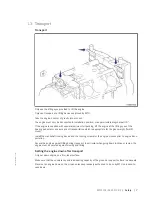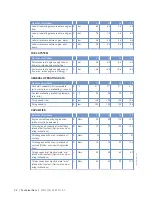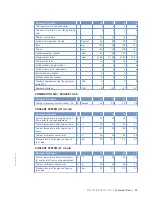
Before connecting the cable to the battery, check the battery polarity. Battery pole reversal may lead to
injury through the sudden discharge of acid or bursting of the battery body.
Working on electrical and electronic assemblies
Always obtain the permission of the person in charge before commencing maintenance and repair work
or switching off any part of the electronic system required to do so.
De-energize the appropriate areas prior to working on assemblies.
Do not damage cabling during removal work. When reinstalling ensure that wiring is not damaged dur-
ing operation by contact with sharp objects, by rubbing against other components or by a hot surface.
Do not secure cables on lines carrying fluids.
Do not use cable straps to secure cables.
Always use connector pliers to tighten union nuts on connectors.
Subject the device as well as the product to a function check on completion of all repair work. In partic-
ular, check the function of the engine emergency stop feature.
Store spare parts properly prior to replacement, i.e. protect them against moisture in particular. Pack
defective electronic components and assemblies in a suitable manner when dispatched for repair, i.e.
protected, in particular, against moisture and impact and wrapped in antistatic foil if necessary.
Working with laser equipment
When working with laser equipment, always wear special laser-protection goggles (hazard due to heavi-
ly focused radiation).
Laser equipment must be equipped with the protective devices necessary for safe operation according
to type and application.
For conducting light-beam procedures and measurement work, only the following laser devices must be
used:
• Laser devices of classes 1, 2 or 3A.
• Laser devices of class 3B, which have maximum output in the visible wavelength range (400 to 700
nm), a maximum output of 5 mW, and in which the beam axis and surface are designed to prevent
any risk to the eyes.
MS15018/02E 2013-09
| Safety | 11
TIM-ID: 0000040535 - 002












































